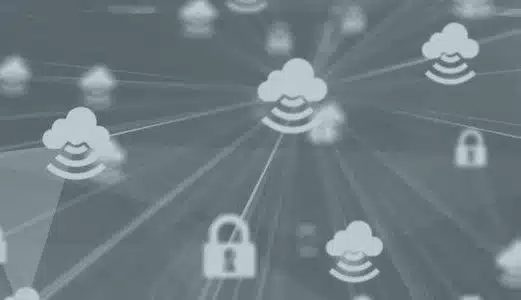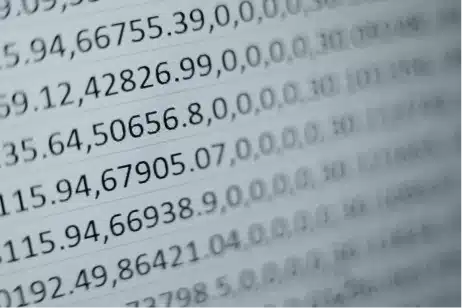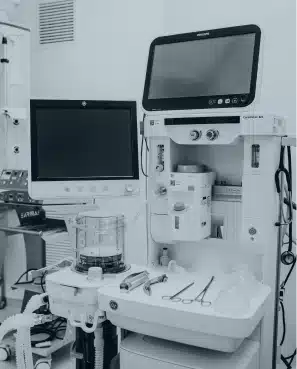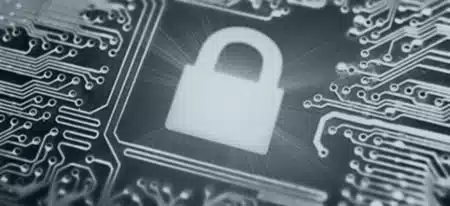IoT platform development
Managing IoT devices presents a formidable challenge, often entailing integration issues, security concerns, and scalability hurdles for OEMs. At Witekio we can help your team mitigate these complexities, providing and implementing an IoT platform that encompasses all the necessary tools for secure device connectivity and management in your infrastructure.
What is an IoT platform?
There are many tools and technologies that could fit within the nebulous definitions of an “IoT platform”. In some settings, this might refer to hardware, software, web services, gateway devices, and many other possibilities. But an IoT platform will specifically refer to the cloud components of a system for interfacing with, managing, updating, and performing other maintenance and administrative operations on a set of IoT devices.
The main challenges to build your IoT platform

Device connectivity
Effective IoT systems rely on robust and reliable communication channels between your IoT devices and the cloud.

Data management
IoT devices generate vast amounts of data that need to be efficiently collected, stored, processed, and analyzed.

Fleet management
Managing a large fleet of IoT devices requires advanced tools to monitor, control, update and maintain your devices effectively.

IoT device security
Security is a paramount concern as devices are often distributed across various locations and exposed to numerous threats.
IoT platforms vs. traditional IoT approaches
Historically, developing an IoT or software application required substantial overhead, including purchasing or leasing servers, maintaining hardware, and ensuring consistent internet connectivity. For organizations focused on developing custom IoT hardware and software, managing server infrastructure became a burdensome task.
Cloud computing partially alleviated this by enabling remote hosting of the necessary server infrastructure. However, maintaining this virtual infrastructure remained a challenge. Consequently, cloud providers introduced IoT-specific platforms tailored to the unique needs of IoT developers.
These platforms address the specialized requirements of IoT devices and the organizations responsible for their deployment and maintenance. They offer features ranging from credential management to advanced data processing workflows, enhancing security, development speed, and scalability.
Cloud computing partially alleviated this by enabling remote hosting of the necessary server infrastructure. However, maintaining this virtual infrastructure remained a challenge. Consequently, cloud providers introduced IoT-specific platforms tailored to the unique needs of IoT developers.
These platforms address the specialized requirements of IoT devices and the organizations responsible for their deployment and maintenance. They offer features ranging from credential management to advanced data processing workflows, enhancing security, development speed, and scalability.

Antoine Roy
Digital Industry Manager
The team was totally focused on the business value. Witekio has been a great technological guide into this IoT world that was new to us and helped us to design and build a scalable and reliable architecture.

4 questions you should ask yourself before starting your IoT platform development
1.
Communication requirements
What are our device-to-cloud communication needs? Are there hardware constraints, specific usage demands, or protocols we must adhere to?
2.
Security measures
How will we secure our devices? Will we implement a particular authentication method for cloud connections? What are the potential security vulnerabilities we must address?
3.
Application management
How will we oversee and troubleshoot our applications? Will we need to support remote administrators or on-site technicians? What tools are essential for maintaining our devices?
4.
Data handling
What are our requirements for data collection, storage, processing, and analysis?

SUCCESS STORY
Build an IoT factory to accelerate Solvay’s IoT projects
To accelerate the development of business projects and leverage the power of IoT, Solvay needed a partner to help set up a custom software platform. Witekio was chosen to design and build this “IoT factory” that would enable cost-effective, secure and rapid IoT solutions deployment. To make sur this platform was scalable and reliable, we acted as an external R&D team to:
- Benchmark all relevant technologies (including cloud connectivity)
- Design a scalable and reliable architecture
- and develop custom software to bridge the gap between Solvay’s infrastructure and IoT technologies
Some renown IoT platform we can help you deploy in your infrastructure
Kamea IoT
Kamea IoT is a robust, API-based IoT platform designed for rapid deployment and long-term sustainability, without the constraints of vendor lock-in. It’s particularly suited for device manufacturers seeking to retain full ownership and control over their IoT infrastructure.
Key benefits include:
Key benefits include:
- Accelerated time-to-market: Kamea allows for the rapid development and deployment of IoT solutions, enabling the launch of a functional v1 within weeks. This is facilitated by its pre-built features for device, data, and user management.
- RESTful API-based management: Kamea API-centric architecture allows developers to manage everything through RESTful APIs, enabling the creation of custom business applications tailored to specific needs.
- Comprehensive security and scalability: Kamea offers secure device provisioning, multi-tenancy, OAuth2.0 authentication, and the ability to manage user permissions with fine-grained accuracy. It also supports OTA updates, ensuring devices remain secure and up-to-date.
- Deployment ease: Delivered with its device, data and user management pre-built features, Kamea also simplifies the deployment process with infrastructure automation tools like Terraform and GitLab CI pipelines.
- Full ownership and flexibility: The platform provides all the necessary tools for managing devices and data on your infrastructure, whether on Azure, AWS, or on-premises. It also offers perpetual access to source code, ensuring long-term independence and platform longevity.
Thingsworks
ThingWorx by PTC is a leading industrial IoT platform, known for its rapid application development capabilities and extensive integration options. It is a strong choice for industrial IoT (IIoT) applications where time-to-market and operational efficiency are critical. Key features include:
- Rapid development environment: ThingWorx offers a model-based development environment that enables quick prototyping and deployment of IoT applications, significantly reducing development time.
- Advanced analytics and Machine Learning: The platform integrates powerful analytics and machine learning tools that allow for predictive maintenance, anomaly detection, and real-time operational insights.
- Comprehensive connectivity: ThingWorx supports a wide range of communication protocols and standards, ensuring seamless connectivity with various devices and systems, from legacy equipment to modern sensors.
- AR integration: ThingWorx’s integration with augmented reality (AR) tools provides an innovative way to visualize IoT data, enhancing operational efficiencies in maintenance, training, and remote assistance.
IoTConnect
IoTConnect, developed by Softweb Solutions, is a scalable and secure IoT platform designed for rapid deployment and integration across industries. Its key strengths lie in its user-friendly interface and extensive feature set, making it suitable for both industrial and commercial applications. Key features include:
- Pre-built industry applications: IoTConnect offers a variety of pre-built applications tailored to specific industries, such as manufacturing, healthcare, and smart buildings, allowing for faster implementation.
- Strong security framework: The platform incorporates multi-layered security protocols, including data encryption, identity management, and secure device onboarding, to protect IoT deployments from cyber threats.
- Data analytics and AI: IoTConnect integrates advanced analytics and AI capabilities, providing actionable insights from IoT data to optimize operations and drive innovation.
- Customizable dashboards: Users can create and customize dashboards to monitor devices, analyze data, and visualize key performance indicators (KPIs) in real-time, enabling informed decision-making.
Azure vs. AWS vs. On-Prem: Choosing the Right Deployment for Your IoT Platform
When building an IoT platform, selecting the right provider and deployment model is crucial for the success of your project. This comparison will explore three key options—Microsoft Azure, Amazon Web Services (AWS), and on-premises deployment—helping you determine the best fit for your IoT needs.
Microsoft Azure
Microsoft Azure offers a broad spectrum of cloud services, including IoT-specific solutions like Azure IoT Hub, which delivers fully managed, cloud-based connectivity for IoT devices. Azure IoT Hub ensures secure communication through options such as symmetric keys, X.509 certificates, and TPMs. Additionally, Azure Device Twins help manage and synchronize device states between the cloud and devices.
Another key service is the Device Provisioning Service (DPS), which simplifies the secure onboarding of new devices across multiple IoT Hubs. This service is customizable to accommodate geographic, regulatory, or business-specific requirements.
For faster IoT solution development, Azure IoT Central provides ready-made application templates, offering rapid deployment with some trade-offs in terms of customization. Meanwhile, Azure IoT Edge supports scalable deployment of containerized applications, enabling computing capabilities across large fleets of devices.
Azure Sphere, a collaboration between Azure and hardware manufacturers, offers enhanced device security and provisioning, leveraging secure authentication without requiring extensive public key infrastructure (PKI) management.
Another key service is the Device Provisioning Service (DPS), which simplifies the secure onboarding of new devices across multiple IoT Hubs. This service is customizable to accommodate geographic, regulatory, or business-specific requirements.
For faster IoT solution development, Azure IoT Central provides ready-made application templates, offering rapid deployment with some trade-offs in terms of customization. Meanwhile, Azure IoT Edge supports scalable deployment of containerized applications, enabling computing capabilities across large fleets of devices.
Azure Sphere, a collaboration between Azure and hardware manufacturers, offers enhanced device security and provisioning, leveraging secure authentication without requiring extensive public key infrastructure (PKI) management.
Amazon Web Services (AWS)
AWS IoT Core serves as the central hub for managing IoT devices on AWS, handling tasks like device registration, authentication, and secure bi-directional messaging between devices and the cloud.
While AWS lacks a direct counterpart to Azure’s DPS, it offers customizable provisioning workflows through AWS Lambda, allowing organizations to create tailored provisioning processes based on their unique requirements.
For edge computing, AWS IoT Greengrass enables cloud functionality at the edge, supporting local messaging, data processing, and machine learning. This open-source edge runtime allows devices to perform computations closer to where the data is generated, improving response times and reducing cloud dependency.
AWS also provides support for FreeRTOS, an open-source operating system for microcontrollers that integrates seamlessly with AWS cloud services, either directly or through IoT Greengrass in edge scenarios.
While AWS lacks a direct counterpart to Azure’s DPS, it offers customizable provisioning workflows through AWS Lambda, allowing organizations to create tailored provisioning processes based on their unique requirements.
For edge computing, AWS IoT Greengrass enables cloud functionality at the edge, supporting local messaging, data processing, and machine learning. This open-source edge runtime allows devices to perform computations closer to where the data is generated, improving response times and reducing cloud dependency.
AWS also provides support for FreeRTOS, an open-source operating system for microcontrollers that integrates seamlessly with AWS cloud services, either directly or through IoT Greengrass in edge scenarios.
On-premises deployment
An on-premises IoT deployment involves managing your IoT infrastructure in-house, using your own hardware and data centers. Unlike cloud-based services, where infrastructure is hosted and managed by providers like Azure or AWS, on-premises deployment gives you complete control over your IoT systems, including data collection, processing, and storage.
One of the primary benefits of on-premises deployment is enhanced data security, as all data remains within your own network. This allows for easier compliance with regulatory requirements and safeguards sensitive information. In addition, local data processing can reduce latency, improve connection stability, and enable real-time data analysis, as there’s no need to send data to the cloud for processing.
On-premises solutions also offer greater customization, allowing businesses to tailor their IoT infrastructure to meet specific operational needs.
One of the primary benefits of on-premises deployment is enhanced data security, as all data remains within your own network. This allows for easier compliance with regulatory requirements and safeguards sensitive information. In addition, local data processing can reduce latency, improve connection stability, and enable real-time data analysis, as there’s no need to send data to the cloud for processing.
On-premises solutions also offer greater customization, allowing businesses to tailor their IoT infrastructure to meet specific operational needs.
We transform your device vision into reality
We support your teams in designing, building, and running innovative products, from embedded software to application development


